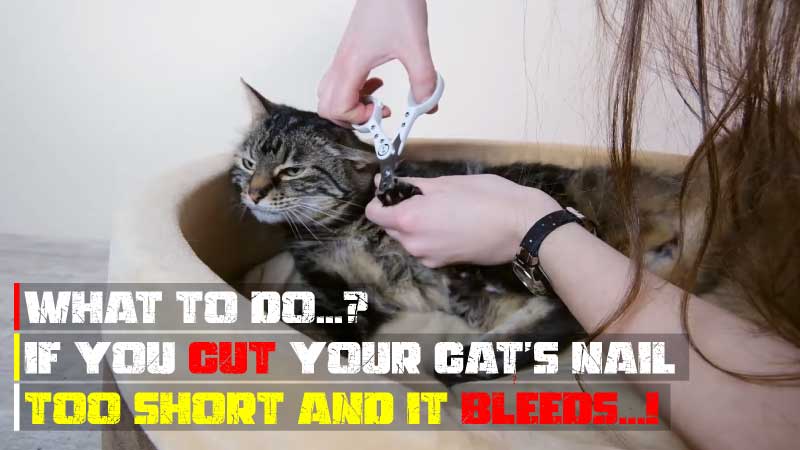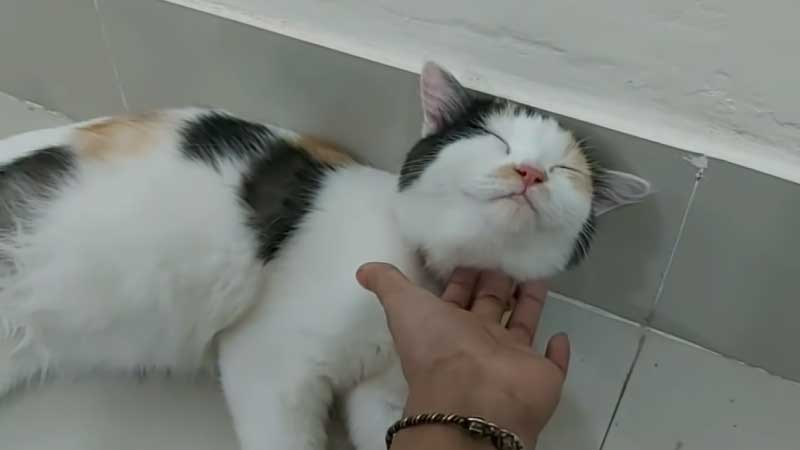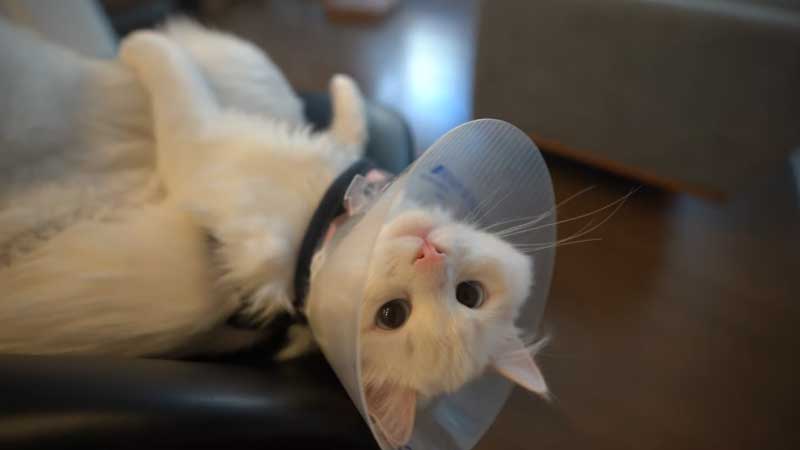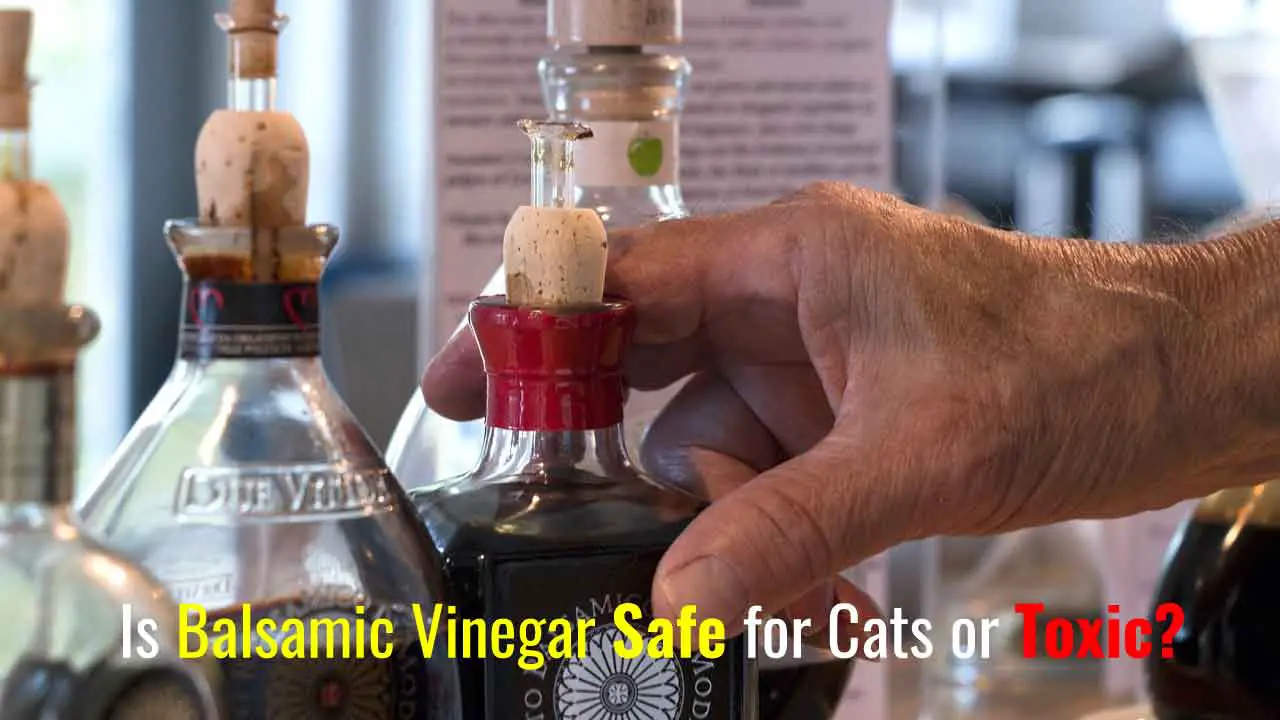It is not uncommon for pet owners to make a mistake during trimming and accidentally cut their cats’ nails too short, resulting in bleeding. A cat’s nails are very sensitive to being cut too short or too long. You may inadvertently damage the quick, which is the sensitive part of the nail that contains blood vessels and nerves.
Due to this, you will find your feline friend in pain, bleeding, and discomfort. When you follow the right steps and use the right techniques, you can effectively treat and manage bleeding. In this complete guide, we will discuss what to do if you cut your cat’s nail too short and it bleeds. Also, we discuss solutions for how to prevent bleeding when trimming your cat’s nails. Without wasting time, let’s get started.
Table of Contents
Cat First Aid: Essential Supplies and Basic Procedures
When choosing a first aid kit for cats, it’s crucial to consider the severity of the bleeding, the comfort of the cat, and the availability of the product at hand. Let’s see.
| Product Name | Application Method | Pros | Cons |
|---|---|---|---|
| Styptic Powder | Gently press the powder onto the bleeding nail tip. | Quickly stops bleeding; commonly used by veterinarians and groomers. | May sting upon application, causing momentary discomfort. |
| Styptic Pencil | Wet the tip and apply it directly to the bleeding nail. | Precise application; can be used for minor skin cuts as well. | Might be slightly painful upon application. |
| Cornstarch | Dip the bleeding nail into the cornstarch or press some onto it. | Easily available in most kitchens; can be effective in stopping minor bleeding. | Not as potent as commercial products; may not work for severe bleeding. |
| Flour | Dip the bleeding nail into the flour or press some onto it. | A common household item; acts as a coagulant to stop minor bleeding. | Not as effective as styptic products; can be messy. |
| Bar Soap | Soften the soap with a bit of water, then press the bleeding nail into the soap. | Widely available; can stop minor bleeding when other options aren’t at hand. | Temporary solution; not as reliable as other methods. |
| Antiseptic Pet Wipes | Gently wipe around the injured nail to clean the area after the bleeding has stopped. | Prevents infection; specially formulated for pets. | Only for cleaning; does not help in stopping bleeding. |
| Pet-safe Antibiotic Ointment | Apply a small amount around the injured nail after cleaning. | Only for post-injury care; it does not stop active bleeding. | Only for post-injury care; does not stop active bleeding. |
What to Do if You Cut Your Cat’s Nail Too Short and It Bleeds: How to Stop!
As a first step, you should always remain calm and composed. If you become anxious or agitated while handling your cat, it can become frightened, which can escalate the situation.
It will be necessary for you to stop the bleeding once you have regained your composure. Several methods can be used to achieve this, such as:
Using styptic powder
Styptic powder is a drug frequently used in pets to stop bleeding from the nose and mouth. Putting just a little amount of powder on the bleeding nail will immediately stop the bleeding, so make sure you do it right away.
Using a styptic pen
This handy tool can be used to stop bleeding in pets quickly. Simply apply the pen to the bleeding nail, which will stop the bleeding.
Using a cold compress
You can also use a cold compress to reduce or stop bleeding from the affected area when the bleeding is continuing. Using this method, you can reduce pain, swelling, and bleeding to a very large extent.
Using cornstarch
If you don’t have access to styptic powder or a styptic pen, you can use cornstarch instead. Simply apply a small amount of cornstarch to the bleeding nail, which should help stop the bleeding.
Post-Injury Care After Accidentally Cut the Quick Cat

Accidents can happen, even to the most seasoned cat owner or professional groomer. Once the immediate concern of stopping the bleeding has been addressed, post-injury care becomes essential to ensure your feline friend’s quick recovery and prevent complications. Here’s what you need to know:
Monitoring for Signs of Infection
The first few days after the injury are crucial. Keep a close eye on your cat’s behavior and the appearance of the affected paw. Signs to watch out for include:
- Swelling or Redness: If the area around the injured nail becomes swollen or red, it might indicate an infection.
- Warmth: The injured area feeling warmer than other parts of the paw can be a sign of inflammation or infection.
- Discharge: Any pus or other discharge from the wound is a red flag.
- Limping or Favoring the Paw: If your cat is avoiding using the injured paw or limping, it might be in pain or discomfort.
- Overlicking: While it’s normal for cats to lick their wounds, excessive licking can be a sign of irritation or pain.
If you notice any of these signs, consult your veterinarian immediately.
Keeping the Cat’s Paw Clean
Maintaining cleanliness can help prevent infection:
- Cleaning: Clean the paw gently with antiseptic pet wipes. If those aren’t available, you can use a damp cloth with a mild saline solution (a teaspoon of salt in a cup of warm water).
- Avoidance: Try to prevent your cat from walking in dirty areas. For indoor cats, ensure the litter box is clean.
- Dressing (if advised by the vet): In some cases, your vet might advise you to put a bandage or dressing around the paw. Make sure it’s not too tight, and regularly change it.
When to Allow Normal Activities
After a nail injury, it might be wise to limit some of your cat’s activities:
- Immediate Rest: Keep your cat calm for the first 24 hours and avoid strenuous activities.
- Scratching: Consider directing your cat away from scratching posts for a day or two. Scratching might reopen the wound.
- Outdoor Activities: If your cat usually goes outdoors, it might be a good idea to keep them inside for a few days to prevent dirt and bacteria from entering the wound.
- Monitor and Gradually Resume: Watch your cat’s behavior. If, after a couple of days, they seem to be moving without pain and the wound looks clean and healed, you can gradually allow them to resume their regular activities.
While cutting your cat’s nail too short can be distressing, with the right post-injury care, most cats will heal quickly and without complications. Always trust your instincts and seek veterinary advice if you’re ever in doubt.
Prevention and Proper Nail Trimming Techniques

Understanding the right techniques and having the correct tools can significantly reduce the risk of cut cat’s nails too short. Let’s explore how to trim your cat’s nails safely.
Select the Right Nail Clipper
There are several types of nail clippers available for cats. Here’s a brief breakdown:
Type 1: Scissor-type Clippers

These resemble scissors but have a semi-circular edge to fit the shape of a cat’s nail. They’re commonly used due to their ease of handling and precision.
Type 2: Guillotine-type Clippers

These have a hole where you insert the cat’s nail. When you squeeze the handles, a blade moves across the hole, trimming the nail. While effective, they might not be the best choice for larger nails or nervous cats.
Type 3: Grinder Tools (e.g., Dremel)

These are electronic tools that grind down the nail instead of cutting it. They’re great for achieving a smooth finish but might be noisy, which could be distressing for some cats.
How to Prevent Bleeding When Trimming Your Cat’s Nails

When trimming your cat’s nails, prevention is always better than cure, and there are a few steps to prevent bleeding. The following are some of them:
- You should trim your cat’s nails regularly so they are kept at a manageable length. Quick is more difficult to cut.
- Always use the right tools for the job to achieve the desired result. Make sure you have a sharp, high-quality nail clipper or trimmer. Dull clippers can cause the nail to crush instead of cut, increasing bleeding.
- Make sure that you familiarize yourself with the anatomy of the nail, including the quick, so you will be aware of where to cut and what not to cut when you do so.
- When it comes to trimming your cat’s nails, you should take your time. Be careful not to rush, and make sure you cut just a small amount at once. The general rule of thumb is to err on the side of caution and cut a bit less than you think you need to if you are uncertain.
How to Safely Trim Cat Nails: An Infographic Guide to Proper Trimming

Dos and Don’ts to Avoid Cutting Your Cat’s Nail Too Short
Dos
Don’ts
Proper nail trimming is as much about the technique as it is about patience and understanding your feline companion. Regular maintenance, the right tools, and a gentle approach can ensure a stress-free experience for both of you.
FAQs
What happens if you cut a cat’s nail too short and it bleeds?
If the quick of a cat is cut too short, it can cause bleeding. A clean, dry cloth or tissue can be used to stop the bleeding, and styptic powder or cornstarch can assist in clotting the blood. If the bleeding does not stop or the cat is in pain, seek veterinary attention.
Will the cat’s nail stop bleed on its own?
If the cut is minor, a cat’s nail may stop bleeding on its own. If the bleeding persists or is significant, you should take action to stop it. To help clot the blood, you can use styptic powder or cornstarch and gently apply pressure. Contact a veterinarian if the bleeding does not stop, and the cat is in pain.
How long does it take for a cat’s nail to stop bleeding?
Many factors influence how long it takes for a cat’s nail to stop bleeding, including the severity of the cut and its clotting ability. Generally, minor cuts stop bleeding within a few minutes. When bleeding persists for longer than 5-10 minutes, it is suggested that you seek veterinary care.
Should I take my cat to the vet for a broken nail?
It depends on how deep the break is. A vet may not be needed if the break is minor and there is no significant bleeding. When your cat’s nail is severely broken and bleeding profusely, or if your cat is in pain or discomfort from the broken nail, it is best to take him to a veterinarian.
Conclusion
You and your cat may both experience stress when you cut your cat’s nails too short and cause bleeding. It is possible to control bleeding quickly and effectively by following the above steps. When trimming your cat’s nails, remember to stay calm, use the right tools, and be aware of the anatomy of her nails. Hopefully, this guide will help you learn what to do if you cut your cat’s nail too short and it bleeds.
Maintaining a manageable length for your cat’s nails makes it easier for you to avoid cutting the quick. For those still unsure or nervous about trimming their cat’s nails, you may want to seek the help of a professional groomer or veterinarian. It takes patience and practice to trim your cat’s nails and keep their paws healthy and injury-free.




